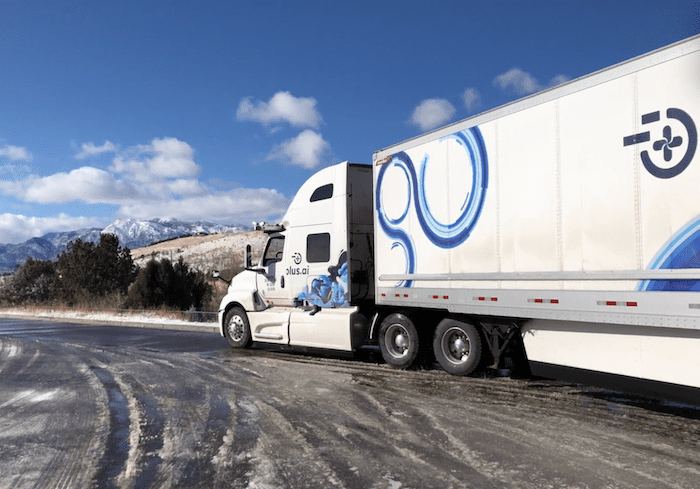
Silicon Valley startup Plus.ai is thought to be the first company to deploy a self-driving commercial truck to haul 40,000 pounds of butter roughly 42 hours cross-country from Tulare, California to Quakertown, Pennsylvania, ZDNet reported.
The company’s Level 4 autonomous semi-tractor-trailer completed the 2,800-mile run for Land O’Lakes in under three days. Although there was a safety engineer on board, no human intervention was needed on the trip, aside from fuel stops and federally mandated breaks.
Plus.ai said the trip marked “the first L4 U.S. cross-country commercial pilot hauling a fully loaded refrigerated trailer of perishable cargo.”
“This cross-country freight run with Land O’Lakes shows the safety, efficiency and maturity of our autonomous trucks, which are already delivering freight for other partners several days a week,” said Shawn Kerrigan, chief operating officer (COO) and co-founder of Plus.ai.
He added that as its autonomous trucks improve, the company envisions that these kinds of cross-country deliveries will become “the norm in the future. We are excited to demonstrate what our technology can already achieve today while meeting rigorous autonomous driving safety and food transportation compliance standards.”
The truck relied on Plus.ai’s simultaneous location and mapping (SLAM) technology and a suite of sensors like cameras, lidar and radar – laser-based technology to help vehicles determine distance – as well as deep-learning visual algorithms.
The trucking industry, long-suffering from a labor shortage, has been moving in the direction of autonomy. Plus.ai has been collaborating with major manufacturers to make autonomous freight the norm.
“To be able to address this peak demand with a fuel- and cost-effective freight transport solution will be tremendously valuable to our business,” Yone Dewberry, chief supply officer for Land O’Lakes, said in a statement.
Strategies for solving the truck driver shortage – which causes friction along supply chains, and across the last mile – may be shifting into gear in Germany. Industry observers have said the in-place driver population is aging into retirement and that younger workers are not stepping in to fill the gap.